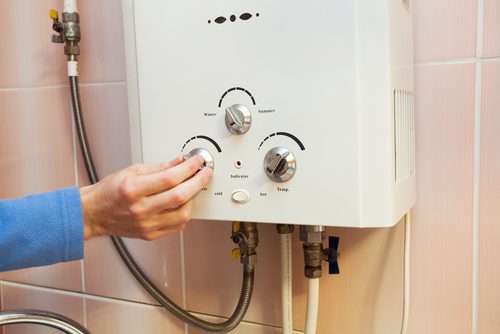We have found the article on What Kind of Maintenance Do Water Heaters Need? directly below on the web and reckoned it made perfect sense to write about it with you on this site.

Hot water is important for daily convenience, whether it's for a revitalizing shower or washing recipes. To ensure your warm water system runs efficiently and lasts much longer, normal upkeep is vital. This article gives sensible ideas and insights on exactly how to keep your home's warm water system to stay clear of disruptions and costly repairs.
Intro
Keeping your home's hot water system could seem difficult, but with a couple of easy actions, you can ensure it runs smoothly for many years to find. This overview covers whatever from comprehending your warm water system to DIY upkeep tips and understanding when to call in expert help.
Importance of Preserving Your Warm Water System
Regular maintenance not just expands the life expectancy of your warm water system but likewise guarantees it operates effectively. Neglecting maintenance can bring about lowered performance, higher power costs, and even premature failing of the system.
Indications Your Warm Water System Needs Maintenance
Understanding when your warm water system requires attention can avoid major problems. Keep an eye out for signs such as inconsistent water temperature level, weird sounds from the heating unit, or rusty water.
Understanding Your Warm Water System
Before diving into upkeep jobs, it's useful to understand the fundamental parts of your warm water system. Normally, this consists of the water heater itself, pipelines, anode poles, and temperature controls.
Month-to-month Upkeep Tasks
Regular regular monthly checks can help catch minor issues before they intensify.
Purging the Water Heater
Purging your water heater gets rid of debris build-up, boosting efficiency and prolonging its life.
Checking and Replacing Anode Rods
Anode poles protect against deterioration inside the container. Evaluating and changing them when worn is crucial.
Examining and Adjusting Temperature Level Setups
Readjusting the temperature settings ensures optimal efficiency and safety and security.
DIY Tips for Maintenance
You can perform a number of upkeep jobs yourself to maintain your hot water system in leading problem.
Looking for Leakages
Frequently check pipes and connections for leakages, as these can result in water damage and greater expenses.
Testing Pressure Alleviation Valves
Evaluating the pressure relief valve ensures it operates appropriately and protects against too much stress build-up.
Insulating Pipes
Protecting warm water pipelines lowers warmth loss and can conserve power.
When to Call a Specialist
While do it yourself maintenance is beneficial, some issues need expert know-how.
Facility Issues Needing Specialist Assistance
Examples include significant leaks, electrical troubles, or if your water heater is constantly underperforming.
Routine Expert Upkeep Perks
Professional maintenance can include complete assessments, tune-ups, and guaranteeing compliance with safety and security criteria.
Final thought
Regular upkeep of your home's warm water system is crucial for performance, durability, and cost financial savings. By following these ideas and understanding when to seek expert assistance, you can make certain a trustworthy supply of hot water without unexpected interruptions.
How to Maintain an Instant Hot Water Heater
Before tinkering with your hot water heater, make sure that it’s not powered on. You also have to turn off the main circuit breaker and shut off the main gas line to prevent accidents. Also turn off the water valves connected to your unit to prevent water from flowing into and out of the appliance. 2. When you’re done, you have to detach the purge valves’ caps. These look like the letter “T” and are situated on either side of the water valves. Doing so will release any pressure that has accumulated inside the valves while at the same time avoid hot water from shooting out and burning your skin. 3. When the purge valves’ caps are removed, you have to connect your hosing lines to the valves. Your unit should have come with three hoses but if it didn’t, you can purchase these things from any hardware or home repair shops. You can also get them from retail stores that sell water heating systems. Read the user’s manual and follow it to complete this task properly. When the hosing lines are connected, open the purge port’s valves. 4. You should never use harsh chemical cleaners or solutions when cleaning your unit. Make use of white vinegar instead. It should be undiluted and you’ll probably use about 2 gallons. 5. Now flush your water heater. This task should probably take about 40 minutes. We can’t give you specific directions for this because the procedure is carried out depending on the type, model and brand of your heater. With that being said, refer to the user’s manual. 6. When you’re done draining the unit, you have to turn off the purge port valves again. Remove the hosing lines that you earlier installed on each of the water valves. Put the valve caps (purge port) back in their respective places and be very careful so as not to damage the rubber discs that are found inside these caps. 7. Now that everything’s back in place, check your user’s manual again to find out how to reactivate your water heating system. 8. Once it is working, turn one of your hot water faucets on just to let air pass through the heater’s water supply pipes. Leave the tap on until water flows smoothly out of it. https://www.orrplumbing.com/blog/2014/september/how-to-maintain-an-instant-hot-water-heater/

As an avid reader about Water Heater Maintenance Tips You Can't Afford to Forget, I think sharing that piece of content was worthwhile. Sharing is nice. You won't know, you might be helping someone out. I praise you for being here. Return soon.
Book Appointment Now